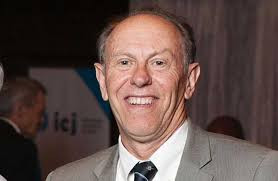
Wherever they are in the world, organisations are living entities shaped profoundly by their leadership. Throughout history, the fate of corporations, governments and institutions hinges on the vision, integrity, commitment and decisiveness of those at the helm.
The adage “leadership makes or breaks an organisation” finds compelling validation in countless examples worldwide. From the soaring success stories driven by visionary leaders to the catastrophic failures resulting from inept or corrupt leadership, the influence of leadership is undeniably paramount.
This instalment explores the pivotal role of leadership in determining organisational trajectories, exemplified through notable successes, such as Lee Iacocca’s stewardship of Chrysler and failures, exemplified by the recent almost downfall of OK in Zimbabwe. The narrative aims to underscore that leadership is not merely a managerial function but the very soul that propels an organisation toward either greatness or demise.
The Iacocca phenomenon is key and very close to my heart, because we studied it in detail when I did my MBA at the University of Ottawa during the period 1985 to 1987. Lee Iacocca had written a best-selling book in 1984 called Lacocca: An Autobiography co-authored by William Novak and in one of our Corporate Strategy courses, we had to unpack his leadership positioning in this book! He went on to write more books in 1988, Talking Straight and 2007, Where Have All the Leaders Gone, respectively.
Visionaries: Lee Iacocca, Chrysler
To understand the transformative power of effective leadership, one needs look no further than Lee Iacocca, the legendary American automobile executive. In the late 1970s and early 1980s, Chrysler was teetering on the brink of bankruptcy, plagued by declining market share, labour unrest and financial insolvency.
At the time, the company was a shadow of its former self, struggling against more innovative competitors and an economic landscape riddled with challenges.
Enter Lee Iacocca, whose leadership qualities; vision, resilience and unwavering commitment, revitalised Chrysler. Iacocca’s strategic vision was rooted in innovation and a bold marketing approach.
- Durban floods: South Africa floods kill more than 250 – officials
- Central bank to introduce 100-dollar note
- US joins calls for Masaraure’s release
- CSOs dare African countries to implement humane drug policies
Keep Reading
He famously secured government loan guarantees during a time of crisis, exemplifying political savvyness and persuasive leadership. His decision to introduce the iconic minivan, the Plymouth Voyager, revolutionised family transportation and positioned Chrysler as an industry innovator.
More importantly, Iacocca’s leadership was marked by his ability to inspire confidence amidst chaos.
His transparent communication, personal accountability and unwavering belief in the company’s potential galvanised employees and stakeholders alike. Under his stewardship, Chrysler not only avoided collapse, but emerged stronger, ultimately turning a profit and restoring its reputation.
This success story underscores crucial leadership qualities: strategic foresight, resilience in adversity, stakeholder engagement and a compelling vision. Iacocca’s leadership exemplifies how decisive, innovative and authentic leadership transforms a struggling organisation into a resilient industry leader.
Failures: OK Zimbabwe case
Contrasting starkly with the success of Iacocca’s leadership is the recent trajectory of OK Zimbabwe. Once a dominant retail conglomerate, OK Zimbabwe faced leadership failure that precipitated its decline.
Today, OK Zimbabwe is in the intensive care ward of business. Its near downfall can be attributed to several leadership shortcomings: Lack of strategic vision, poor corporate governance, complacency and failure to adapt to the fast changing market conditions. Under the leadership of its former management, the organisation failed to innovate, neglected the importance of customer satisfaction and succumbed to internal inefficiencies.
A critical factor was the leadership’s inability to navigate economic challenges unique to Zimbabwe: unpredictability, hyperinflation, currency instability and political uncertainties, without strategic foresight. Instead of diversifying and modernising its operations, the leadership adhered to outdated business models, leading to dwindling market share and financial losses.
As if that was not enough, internal mismanagement and corruption further eroded organisational credibility. Reports of excessive executive remuneration and perks in the face of decline and complacency tainted the company’s reputation, alienating loyal customers and investors.
As a result, the company’s financial health deteriorated, leading to operational inefficiencies, loss of confidence among stakeholders and eventual leadership removal.
This case exemplifies how poor leadership, marked by complacency, and inability to adapt, can accelerate organisational decline, even in sectors with longstanding dominance. It underscores that leadership failure is often not just about individual flaws but systemic issues within corporate governance and strategic oversight.
Differentiating success, failure
Analysing these contrasting examples reveals key attributes that distinguish successful from failed leadership:
Vision and adaptability: Successful leaders possess a clear vision and the flexibility to adapt to changing circumstances. Iacocca’s foresight in product innovation and market positioning contrasted sharply with the stagnation of OK Zimbabwe’s leadership, which failed to evolve in response to economic and technological shifts.
Organisations rise or fall on the back of leadership
- Integrity and transparency: Trustworthiness fosters loyalty and stakeholder confidence. Iacocca’s transparent communication built trust, whereas the leadership failures at OK Zimbabwe were marred by lack of accountability.
- Resilience and decisiveness: Leaders must demonstrate resilience in crises and decisiveness in action. Iacocca’s bold decisions during Chrysler’s financial crisis exemplified this, whereas indecisiveness and internal disputes hampered OK Zimbabwe’s leadership.
- Stakeholder engagement: Effective leaders inspire employees, customers, investors and the community. Iacocca’s personal rapport with employees motivated collective effort. Conversely, leadership neglect at OK Zimbabwe led to disenchantment and decline.
- Strategic innovation: Innovation is the lifeblood of organisational growth. Leaders like Iacocca championed innovation, failure to do so, as seen in OK Zimbabwe’s case, results in obsolescence.
Leadership in the context of Zim: A broader reflection
Zimbabwe’s economic landscape presents unique challenges: hyperinflation, political uncertainty and resource constraints. These factors demand adaptive and visionary leadership. The recent troubles associated with OK highlights the dire consequences of leadership lapses in such an environment.
In Zimbabwe, corporate leadership often faces pressures rooted in corruption, patronage and complacency. The collapse of OK reflects broader systemic issues within Zimbabwean business leadership, where short term gains and personal agendas supersede long term strategic planning. This scenario emphasises that leadership failures are not confined to individual organisations but are symptomatic of systemic weaknesses. It underscores the need for robust governance, ethical leadership and strategic innovation to sustain organisational resilience amid economic turbulence.
Lessons learned and moving forward
The juxtaposition of success and failure in leadership offers vital lessons: Leadership is a choice and a responsibility. Leaders must consciously choose integrity, innovation and resilience as guiding principles.
Strategic vision is non-negotiable
Organisations require leaders who can anticipate future trends and adapt accordingly.
- Accountability and transparency build trust
- Ethical leadership fosters stakeholder confidence, essential for longevity.
- Adaptability is critical in dynamic environments
- Leaders must be willing to pivot strategies in response to external shocks
- Systemic strengthening is critical
- Good leadership extends beyond individuals to systemic reforms in governance and corporate culture
Conclusion
Organisations’ successes or failures are deeply rooted in the calibre of leadership at their core. The inspiring turnaround of Chrysler under Lee Iacocca demonstrates how visionary, resilient and ethical leadership can propel organisations to unparalleled heights. On the other hand, the decline of the OK Zimbabwe exemplifies how leadership failures, marked by complacency and inflexibility, can lead to organisational collapse.
In an increasingly complex and volatile world, leadership must transcend mere management: it must embody vision, integrity and adaptability. Organisations that nurture such leadership will not only survive but thrive, forging a legacy of excellence and resilience. When these principles are, neglected it risks downfall, as history consistently reveals.
Ultimately, organisations soar or fall on the leadership they cultivate. Recognising and cultivating effective leadership is not just an organisational imperative — it is the very foundation of sustainable success.
Ndoro-Mkombachoto is a former academic and banker. She has consulted widely in strategy, entrepreneurship and private sector development for organisations that include Seed Co Africa, Hwange Colliery, RBZ/CGC, Standard Bank of South Africa, Home Loans, IFC/World Bank, UNDP, USAid, Danida, Cida, Kellogg Foundation, among others, as a writer, property investor, developer and manager. — @HeartfeltwithGloria/ +263 772 236 341.






